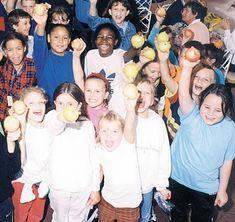
More than one in three children have no idea what a chip is made from, according to a recent survey.
One in 10 thought the popular food was made purely from oil, while others thought it originated from an egg, flour or apples.
The study, by the British Heart Foundation, revealed that around 36 per cent of eight to 14-year-olds were ignorant of the basic food groups which make up their daily diet.
The charity released the results of its study at the start of a new campaign, Food4Thought to get children thinking more about what is in their food and how they can make healthier choices.
Happily, however, the survey did reveal the fact the 5 A DAY message is getting through to youngsters, with 71 per cent knowing the recommended number of fruit and veg to eat a day.
BHF Director General, Peter Hollins, said, “It sends a shiver down my spine to discover that so many children don't even know what chips are made of. Kids have lost touch with even the most basic foods and no longer understand what they are eating.
“Banning foods or telling children not to eat them is not enough - we must engage children in understanding why certain foods are less healthy than others, and encourage them to become interested in what's on their plate.
“This campaign is about talking to children in their language and sparking their curiosity so that they think about what they eat and start demanding healthier options.”
Other figures revealed that nearly two thirds of children (64 per cent) wish they ate more healthily - with boys most concerned.
Views on the junk food ban in schools is split down the middle. Some 43 per cent are in favour of the move and 41 per cent against. Some 47 per cent of girls think the move was a good idea, and just 40 per cent of boys.
Nearly a third, 30 per cent said expense was the main reason that put them off healthy snacks.
Children think the most effective ways to encourage them to eat more healthily are making healthy food taste and look better (44 per cent), parents buying more healthy food (33 per cent) and cool advertising for healthy food (29 per cent).